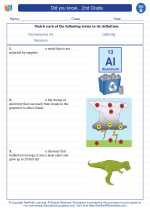Static Electricity
Static electricity is the build-up of electric charge on the surface of objects. It is called "static" because the charges remain in one area rather than moving or "flowing" to another area.
Causes of Static Electricity
Static electricity is caused by the imbalance of positive and negative charges on objects. When two objects rub against each other, the friction between them causes the transfer of electrons, leading to one object becoming positively charged and the other becoming negatively charged.
Examples of Static Electricity
Some common examples of static electricity include:
- The shock you feel when touching a metal doorknob after walking on carpet
- Balloons sticking to the wall after being rubbed on hair or clothing
- Lightning during a thunderstorm
How Static Electricity Works
When two objects have opposite charges (one positive and one negative), they will be attracted to each other. However, if the objects have the same charge (both positive or both negative), they will repel each other.
Study Guide
Here are some key points to remember about static electricity:
- Static electricity is the build-up of electric charge on the surface of objects.
- Friction between objects causes the transfer of electrons, leading to the imbalance of charges.
- Examples of static electricity include shocks from metal objects, balloons sticking to surfaces, and lightning.
- Objects with opposite charges are attracted to each other, while objects with the same charge repel each other.
Remember to practice these concepts by experimenting with different materials and observing how static electricity behaves in everyday situations.
.◂Science Worksheets and Study Guides Second Grade. Did you know... 2nd Grade

 Worksheet/Answer key
Worksheet/Answer key
 Worksheet/Answer key
Worksheet/Answer key
 Worksheet/Answer key
Worksheet/Answer key
 Vocabulary/Answer key
Vocabulary/Answer key
